Three billion years ago, Earth was a very different place.
-
New Icy Worlds Website
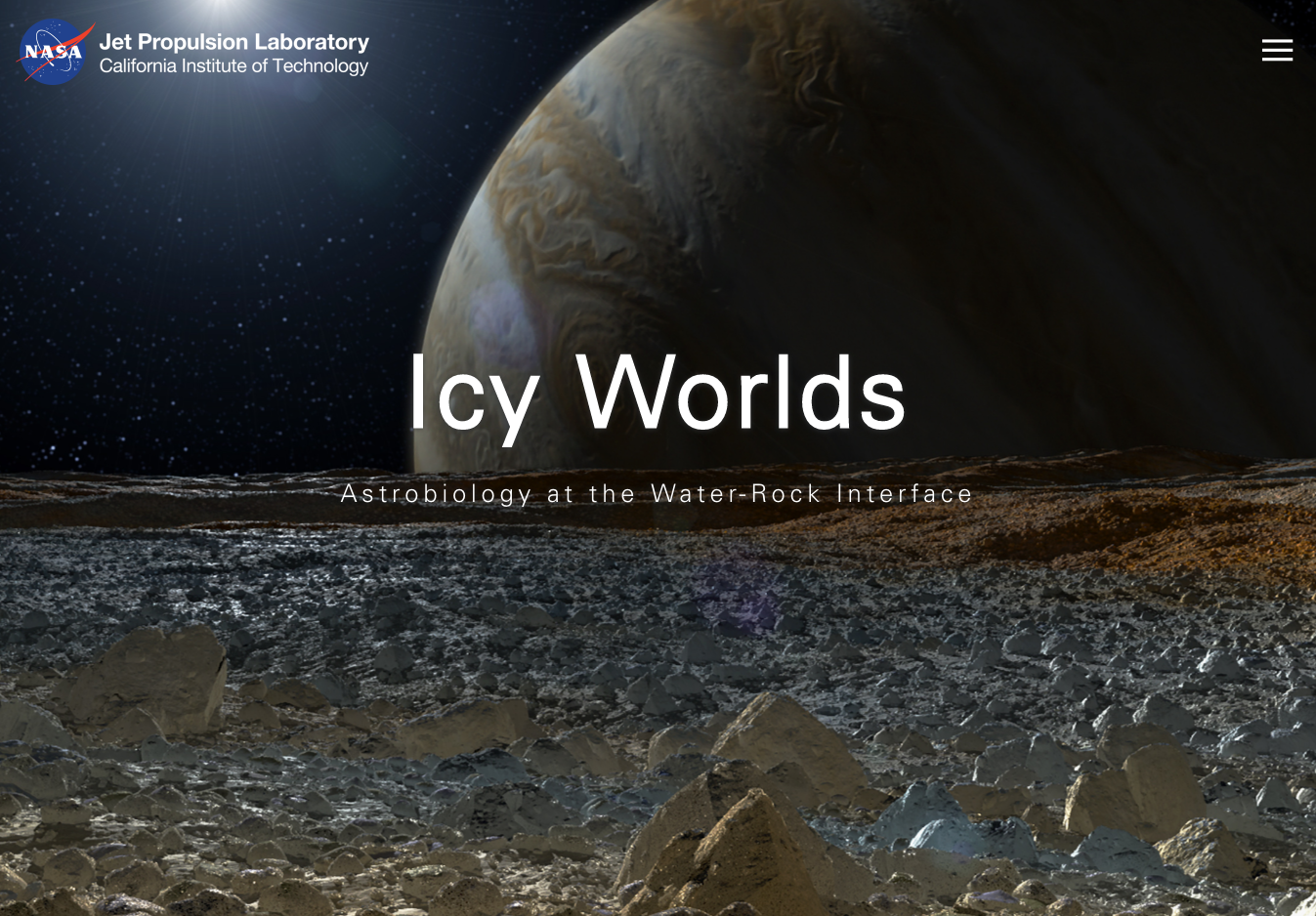
The NASA Astrobiology Institute team at Jet Propulsion Laboratory have launched their new website! The Icy Worlds site (https://icyworlds.jpl.nasa.gov/) presents news, multimedia, videos detailing their research investigations, and more. Discover what’s happening in astrobiology at the water-rock interface.
August 26, 2016 • Written by: Miki Huynh • Report issue
-
Astrobiology Primer v2.0 Released
The long awaited second edition of the Astrobiology Primer has been published in the journal Astrobiology, and is available to download!
This version is an update of the Primer originally published in 2006 by graduate students and postdoctoral researchers who wanted to provide a comprehensive introduction to the field. The 2016 version contains revised content that addresses the definition of life in scientific research, the origins of planets and planetary systems, the evolution and interactions of life on Earth, habitability on worlds beyond Earth, the search for life, and the overall implications of the astrobiology research. The Primer is intended ...
Source: [Astrobiology]
August 23, 2016 • Written by: Miki Huynh • Report issue
-
2016 Selections for the NASA Astrobiology Postdoctoral Program Fellowship
Congratulations to the recipients of the March 2016 NASA Postdoctoral Program (NPP) Fellowships in astrobiology!
Alan Heays
Advisor: James Lyons, (Arizona State University, Exobiology)
Topic: “Explaining isotope fractionation of sulphur in the Archean atmosphere”Baptiste Journaux
Advisor: J. Michael Brown/Steve Vance (University of Washington, NAI NASA JPL Icy Worlds team)
Topic: “Comprehensive thermodynamics of aqueous solutions and ice for understanding the habitability of extraterrestrial oceans”Edward Wade Schwieterman
Advisor: Timothy Lyons (NAI University of California, Riverside team)
Topic: “Visualizing alternative Earths through time and space”Elizabeth Trembath-Reichert
Advisor: Jan Amend (NAI University of Southern California team)
Topic: “Stable Isotope ...August 22, 2016 • Written by: NASA Astrobiology Institute (NAI) • Report issue
-
Dissolved Organic Carbon in the High Arctic
A team of researchers studying samples from streams in the High Arctic has uncovered the lowest values measured thus far for stable carbon isotopic composition of dissolved organic matter (δ13C-DOC) in surface waters. When studying dissolved organic matter in environmental samples, scientists look at its stable carbon isotopic composition in order to learn about where the organic matter came from, and the extent to which it was processed by living organisms.
The new study outlines how biological activity has a significant impact on water chemistry in the streams, and indicates that environments with low amounts of dissolved organic carbon ...
Source: [Journal of Geophysical Research: Biogeosciences]
August 19, 2016 • Written by: Aaron Gronstal • Report issue
-
Astrobiology Chair Nathaniel Comfort Discusses the RNA World with Pioneering Scientists

Nathaniel Comfort, Walter Gilbert, W. Ford Doolittle, Ray Gesteland, and George E. Fox discuss the origins of the RNA World hypothesis at the Kluge Center. The webcast was recorded March 17, 2016. Source: Library of CongressBack in March 2016, science historian and current Blumberg Chair in Astrobiology, Dr. Nathaniel Comfort, led a program at the Kluge Center entitled “The Origins of the RNA World,” bringing into the conversation four scientists involved in the pivotal shift in origins of life research: Dr. Walter Gilbert, Dr. W. Ford Doolittle, Dr. Ray Gesteland, and Dr. George E. Fox. The webcast is available for streaming.
Comfort later spoke with Dan Turello at the Library of Congress, touching on the history of the RNA World hypothesis, its influence on current research on the last universal common ancestor (LUCA), and how ...
Source: [Library of Congress]
August 16, 2016 • Written by: Miki Huynh • Report issue
-
SETI Reconceived and Broadened
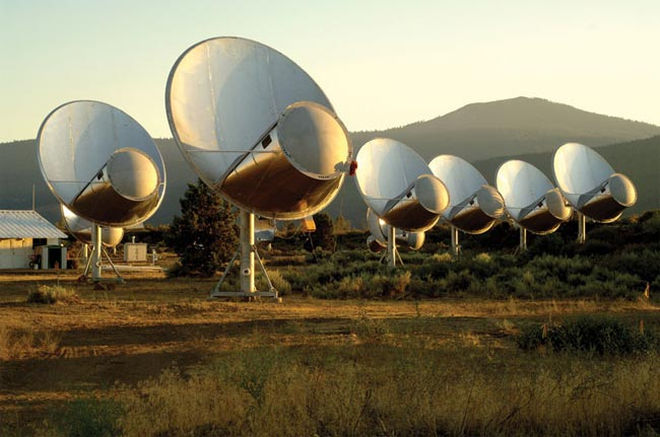
SETI’s partially-built Allen Telescope Array in Northern California, the focus of the organization’s effort to collect signals from distant planets, and especially signals that just might have been created by intelligent beings. (SETI)For decades, the Search for Extraterrestrial Intelligence (SETI) and its SETI Institute home base have been synonymous with the search for intelligent, technologically advanced life beyond Earth. The pathway to some day finding that potentially sophisticated life has been radio astronomy and the parsing of any seemingly unnatural signals arriving from faraway star system — signals that just might be the product of intelligent extraterrestrial life.
It has been a lonely five decade search by now, with some tantalizing anomalies to decipher but no “eurekas.” After Congress defunded SETI in the early 1990s — a Nevada senator led the charge against spending ...
Source: [Many Worlds]
August 12, 2016 • Written by: Marc Kaufman • Report issue
-
Newly Discovered Fossils Strengthen Proposition that World’s First Mass Extinction Engineered by Early Animals
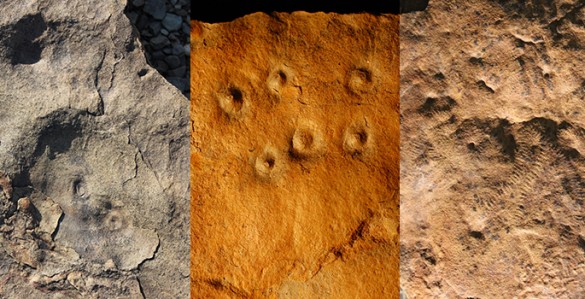
Fossils from Zaris site in Namibia: left, the discs are fossil remains of the holdfast structures that were holdfast structures for an Ediacaran species called aspidella; middle, bumps on the rock surface are the remains of burrows, called conichnus burrows, that were originally inhabited by anemone-like animals that may have fed on Ediacaran larvae; right, odd annulated and ribbon-like fossils that represent mysterious early animals (likely ecosystem engineers) called shaanxilithes. Image credit: Simon Darroch/VanderbiltNewly discovered fossil evidence from Namibia strengthens the proposition that the world’s first mass extinction was caused by “ecosystem engineers” – newly evolved biological organisms that altered the environment so radically it drove older species to extinction.
The event, known as the end-Ediacaran extinction, took place 540 million years ago. The earliest life on Earth consisted of microbes – various types of single-celled organisms. These held sway for more than 3 billion years, when the first multicellular organisms evolved. The most successful of these were the Ediacarans, which spread around the globe about 600 million years ago. They were a largely ...
Source: [Vanderbilt University]
August 11, 2016 • Written by: David Salisbury • Report issue
-
Lichen Redefined as a Symbiosis of Three
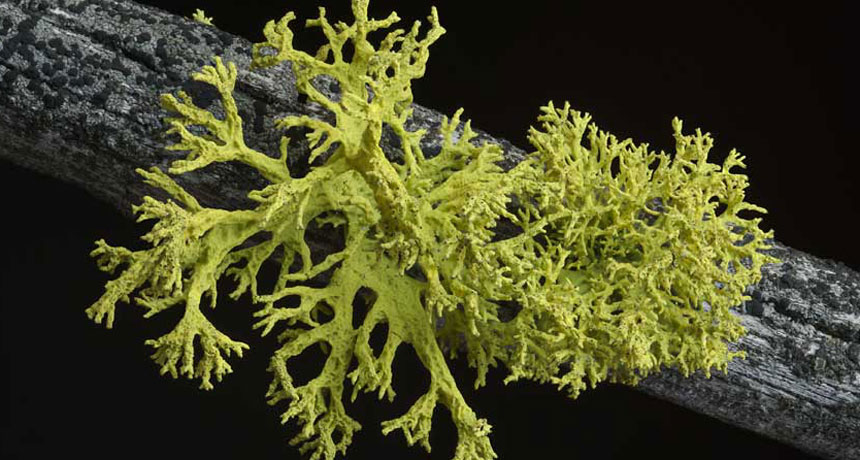
Basidiomycete yeast was discovered in the cortex of the wolf lichen, as well as among several other species. Image credit: University of MontanaRecent research from the University of Montana has challenged the longstanding textbook definition of lichen.
Before the study was published in Science, lichen was thought to be a symbiosis of a single fungus, usually an ascomycete, and a photosynthesizing bacteria or algae. Lead author Toby Spribille analyzed different species across six continents and discovered the existence of a third essential constituent: basidiomycete yeast. The yeast cells were embedded in the lichen cortex and may provide an explanation for the variety of characteristics seen among the species.
“Basidiomycete yeasts in the cortex of ascomycete macrolichens” has since received wide media coverage ...
August 08, 2016 • Written by: Miki Huynh • Report issue
-
Mayo Clinic Studies How Life Survives Extreme Environments
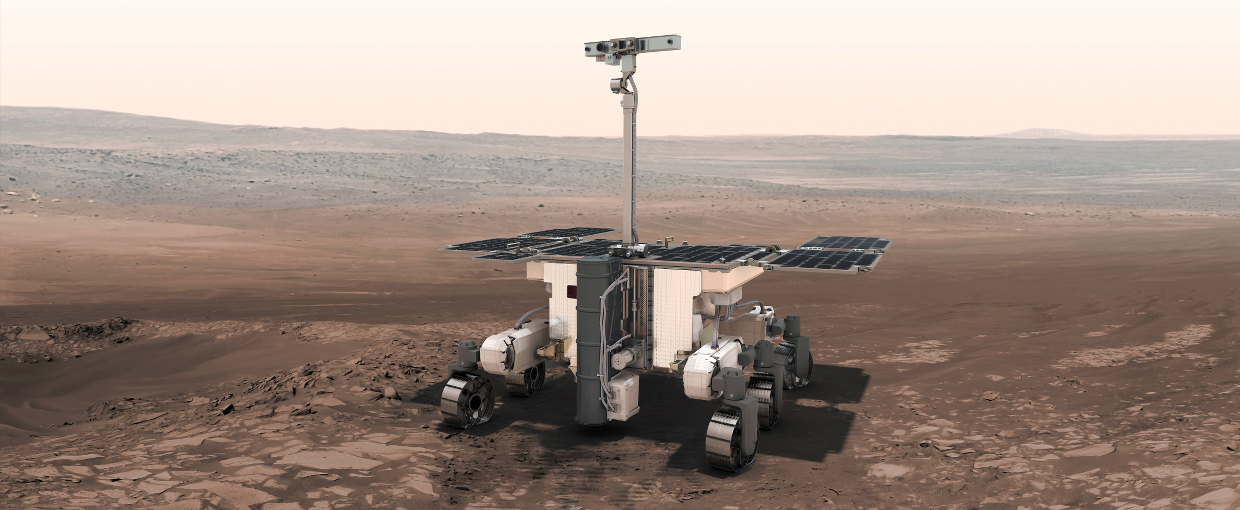
A theoretical instrument that would search for individual microbes on the surface of Mars.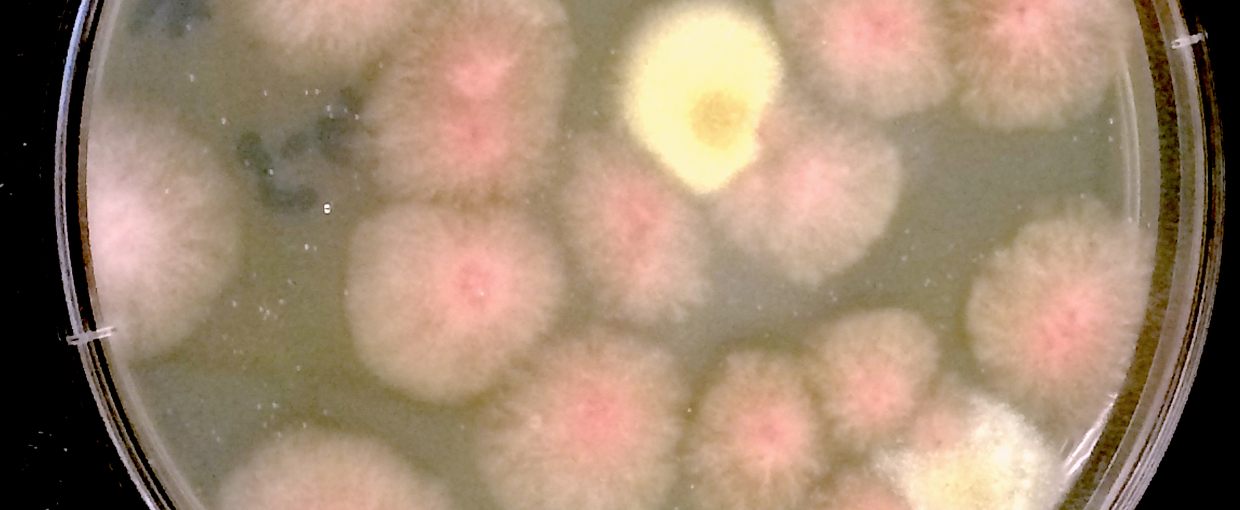
Colonies of fungi grown on the International Space Station, one of many extreme environments researchers are studying to see how microbes behave.August 05, 2016 • Written by: Elizabeth Howell • Report issue
-
Omani Wells May Shed Light on Martian Methane

Scientists survey the peridotite landscape and obtaining access to deep wells drilled into peridotite.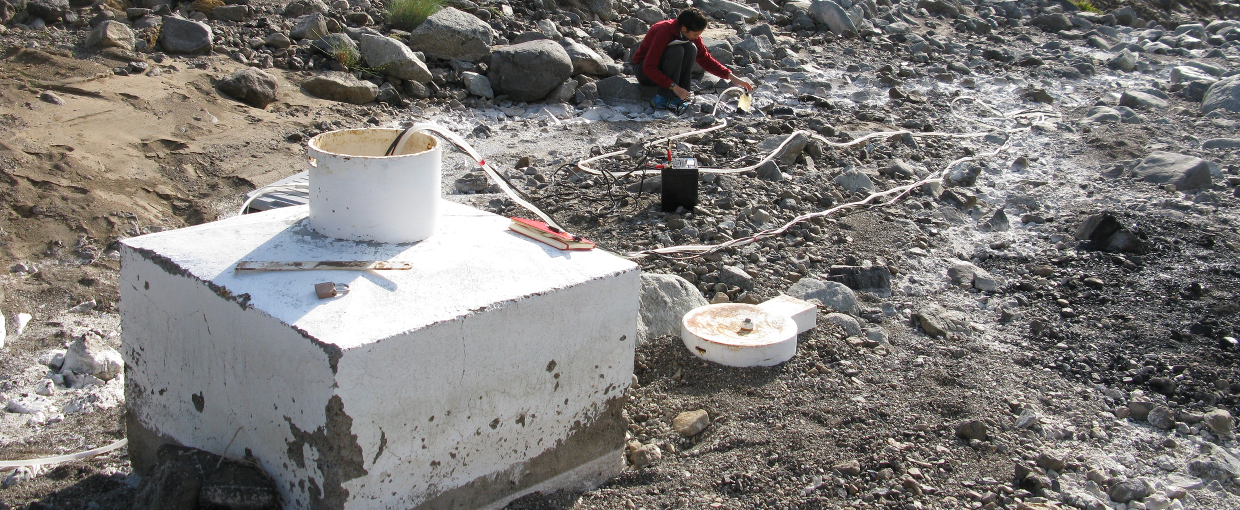
Graduate student Hannah Miller pumping water out of a deep well drilled into peridotite, measuring the pH of the water.Source: [astrobio.net]
August 03, 2016 • Written by: Jeremy Hsu • Report issue
-
Call for Applications for Baruch S. Blumberg NASA/Library of Congress Chair in Astrobiology

The John W. Kluge Center at the Library of Congress is now accepting applications for the 5th Baruch S. Blumberg NASA/Library of Congress Chair in Astrobiology. The application deadline is December 1, 2016.
The Astrobiology Chair is a distinguished senior research position in residence at the Library of Congress for a period of up to twelve months. Using research facilities and services at the Library of Congress, the scholar engages in research at the intersection of the science of astrobiology and its humanistic and social implications. The appointment ensures the subject of astrobiology’s role in culture and society ...
Source: [Library of Congress]
August 01, 2016 • Written by: Library of Congress • Report issue
-
Coming to Terms with Biosignatures
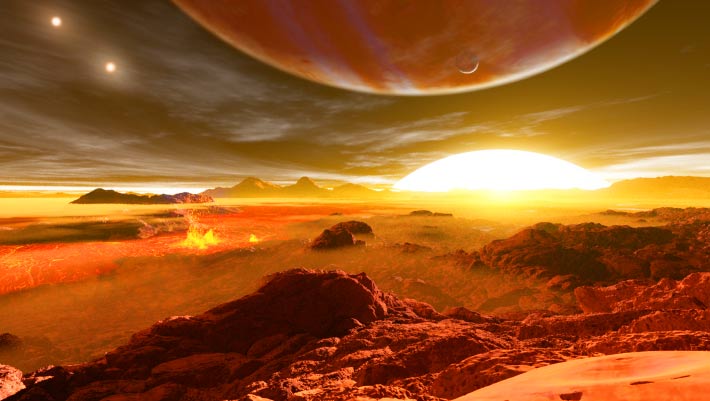
The search for life beyond our solar system has focused largely on the detection of an ever-increasing number of exoplanets, determinations of whether the planets are in a habitable zone, and what the atmospheres of those planets might look like. It is a sign of how far the field has progressed that scientists are now turning with renewed energy to the question of what might, and what might not, constitute a sign that a planet actually harbors life.
The field of “remote biosignatures” is still in its early stages, but a NASA-sponsored workshop held this summer in Seattle has ...
Source: [Many Worlds]
July 28, 2016 • Written by: Marc Kaufman • Report issue
-
Exoplanet Biosignatures Workshop Without Walls

NASA Nexus for Exoplanet System Science (NExSS) and Astrobiology Program host the Exoplanet Biosignatures Workshop Without WallsThe workshop takes place July 27-29 in Seattle, WA. Watch the live broadcast beginning July 27 at 8:30AM PDT.
Hosted by the NASA Nexus for Exoplanet System Science (NExSS) and Astrobiology Program, the Exoplanet Biosignatures Workshop brings together the astrobiology, exoplanet, and mission concept communities to review, discuss, debate, and advance the science of biosignatures.
This highly interactive workshop will include plenary talks to set the stage for small group discussions that focus on addressing key science questions identified by the Science Organizing Committee. More information and the event schedule are available at: http://nai.nasa.gov/calendar/workshop-without-walls-exoplanet-biosignatures ...
July 26, 2016 • Written by: Miki Huynh • Report issue
-
2016 Astrobiology Minority Institution Research Support (MIRS) Program Fellows
The NASA Astrobiology Program is pleased to announce the selection of three faculty members from Minority Serving Institutions who will participate in the 2016 Minority Institution Research Support (MIRS) Program.
Dr. Guillermo Nery, University of Puerto Rico, Arecibo
Hosts – Laurie Barge and Michael Russell, JPL
“A Proposal for Developing and Applying a Habitability Index for Europa’s Ice-Covered Ocean“Dr. Hemayat Ullah, Howard University
Host – Dr. Shiladitya DasSarma, University of Maryland School of Medicine
“Co-evolution of Retinal pigments with Chlorophyll: Does the spectroscopic complementarity signal one of the oldest metabolic capabilities on Earth?“Dr. Rakesh Mogul, California State Polytechnic University ...
July 25, 2016 • Written by: NASA Astrobiology Institute (NAI) • Report issue
-
Recipients of NASA Early Career Collaboration Awards
We are pleased to announce the selections for the April 2016 Early Career Collaboration Award.
Steffen Bueseccher, Arizona State University
Daniel will collaborate with Hiroshi Imanaka (NASA Ames Research Center), “Deciphering the Role of Abiotic N2O formation on atmospheric N2O in the Archaean and implications on the faint young Sun paradox.”Ben Galeota-Sprung, University of Pennsylvania
Ben will travel to University of Pittsburgh to collaborate with Vaughn Cooper to examine how mutation rates evolve over time.Daniel Gregory, University of California, Riverside
Daniel will visit Steve Romaniello and Aleisha Johnson at Arizona State University to examine ...July 22, 2016 • Written by: NASA Astrobiology Institute (NAI) • Report issue



